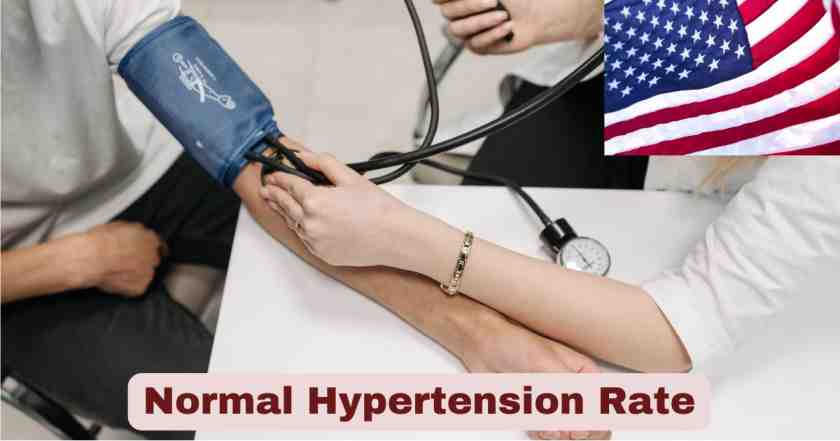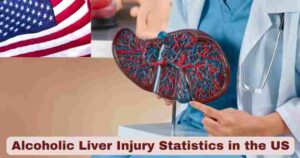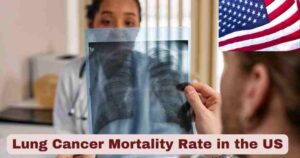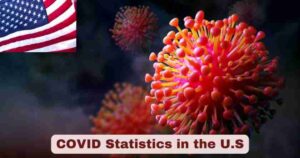Normal Hypertension Rate in the US 2025
The normal hypertension rate in the United States continues to present significant public health challenges as we advance through 2025. With nearly half of all American adults affected by this condition, understanding the current landscape of hypertension prevalence becomes crucial for healthcare professionals, policymakers, and individuals seeking to manage their cardiovascular health. The definition of normal hypertension has evolved considerably since the American College of Cardiology and American Heart Association revised their guidelines in 2017, lowering the threshold to a systolic pressure of 130 mmHg or diastolic pressure of 80 mmHg.
The latest government data reveals alarming trends that demand immediate attention from both healthcare systems and individual Americans. High blood pressure affects approximately 47.7% of adults aged 18 and older, representing nearly 120 million Americans who are living with this largely preventable condition. This statistic underscores the critical importance of regular blood pressure monitoring, lifestyle modifications, and appropriate medical interventions to reduce the burden of cardiovascular disease across the nation.
Facts & Statistics about Normal Hypertension Rate in the US 2025
| Key Hypertension Facts in the US 2025 | Statistics |
|---|---|
| Overall Hypertension Prevalence Rate | 47.7% of adults |
| Total Americans with Hypertension | 119.9 million adults |
| Male Hypertension Rate | 50.8% |
| Female Hypertension Rate | 44.6% |
| Hypertension Awareness Rate | 59.2% |
| Treatment Rate Among Hypertensive Adults | 51.2% |
| Control Rate Among Hypertensive Adults | 20.7% |
| Deaths Attributed to Hypertension (2022) | 685,875 deaths |
| Annual Economic Cost | $131 billion |
| Adults with Uncontrolled Blood Pressure ≥140/90 | 37 million adults |
| Young Adults (18-39) with Hypertension | 23.4% |
| Middle-aged Adults (40-59) with Hypertension | 52.5% |
| Older Adults (60+) with Hypertension | 71.6% |
Based on the most recent National Health and Nutrition Examination Survey data from August 2021 to August 2023, these statistics reveal the persistent nature of the hypertension epidemic in America. The 47.7% prevalence rate represents a slight decrease from the previous measurement period of 2017-March 2020, when 48.1% of adults had hypertension. However, this marginal improvement masks significant disparities across demographic groups and concerning gaps in awareness, treatment, and control.
The data demonstrates that men consistently show higher rates of hypertension compared to women, with 50.8% of men affected versus 44.6% of women. This gender disparity becomes particularly pronounced in younger age groups, where men aged 18-39 show a 30.0% prevalence rate compared to 16.4% for women in the same age bracket. The awareness statistics reveal that nearly 41% of Americans with hypertension remain undiagnosed, highlighting critical gaps in preventive healthcare screening and regular medical check-ups.
Age-Related Hypertension Prevalence Patterns in the US 2025
| Age Groups | Overall Prevalence | Male Prevalence | Female Prevalence | Treatment Rate | Control Rate |
|---|---|---|---|---|---|
| 18-39 years | 23.4% | 30.0% | 16.4% | 13.9% | 4.5% |
| 40-59 years | 52.5% | 55.9% | 49.0% | 47.1% | 18.1% |
| 60+ years | 71.6% | 72.8% | 70.6% | 69.1% | 29.2% |
The age-stratified analysis reveals the progressive nature of hypertension development throughout the lifespan. Young adults aged 18-39 years show the lowest prevalence at 23.4%, but this still represents nearly one in four young Americans living with elevated blood pressure. The dramatic increase to 52.5% in the middle-aged group (40-59 years) demonstrates how hypertension becomes increasingly common as Americans enter their most productive working years.
The most striking finding emerges in the 60+ age group, where more than seven out of ten adults (71.6%) have hypertension. This near-universal prevalence among older Americans reflects both the natural aging process and the cumulative effects of lifestyle factors, genetic predisposition, and other comorbid conditions. The treatment rates show a corresponding increase with age, from 13.9% in young adults to 69.1% in seniors, indicating that healthcare providers are more likely to initiate antihypertensive therapy in older patients. However, the control rates remain suboptimal across all age groups, with the highest success rate of 29.2% achieved in the oldest demographic.
Racial and Ethnic Disparities in Hypertension Rates in the US 2025
| Race/Ethnicity | Hypertension Prevalence | Blood Pressure Control Rate | Treatment Adherence |
|---|---|---|---|
| Non-Hispanic Black Adults | 56% | 25% | Lower adherence rates |
| Non-Hispanic White Adults | 48% | 32% | Higher adherence rates |
| Non-Hispanic Asian Adults | 46% | 19% | Moderate adherence rates |
| Hispanic Adults | 39% | 25% | Variable adherence rates |
The racial and ethnic disparities in hypertension prevalence continue to represent one of the most significant health equity challenges in American healthcare. Non-Hispanic Black adults experience the highest burden, with 56% affected by hypertension compared to 48% of Non-Hispanic White adults. This 8-percentage point difference translates to millions of additional cases within the Black community and contributes to disproportionate rates of stroke, heart disease, and kidney failure.
The control rates reveal even more concerning disparities, with Non-Hispanic White adults achieving 32% control compared to only 25% for both Non-Hispanic Black and Hispanic adults. Non-Hispanic Asian adults face the lowest control rate at 19%, despite having a relatively lower overall prevalence rate of 46%. These disparities reflect complex interactions between socioeconomic factors, access to healthcare, cultural barriers, genetic predispositions, and systemic inequities in healthcare delivery. The lower control rates among minority populations contribute to higher rates of hypertension-related complications and premature mortality in these communities.
Geographic Distribution of Hypertension Prevalence in the US 2025
| Region | Self-Reported Hypertension Rate | Estimated True Prevalence | Healthcare Access Score |
|---|---|---|---|
| Southern States | Higher than national average | Significantly underreported | Lower access scores |
| Southeastern States | Above 35% in many counties | Potentially 50%+ | Rural access challenges |
| Western States | Below national average | Still underreported | Better urban access |
| Northeastern States | Variable by state | Urban-rural disparities | Mixed access patterns |
Geographic variations in hypertension prevalence reflect the complex interplay of socioeconomic factors, lifestyle patterns, healthcare infrastructure, and cultural influences across different regions of the United States. The Southern and Southeastern states consistently demonstrate the highest rates of self-reported hypertension, with many counties reporting rates above 35% of the adult population. However, these self-reported figures likely represent significant underestimation of the true prevalence, as approximately 20% of adults with hypertension remain unaware of their condition.
The higher prevalence in Southern states correlates with various risk factors including higher rates of obesity, diabetes, lower educational attainment, limited access to healthy food options, and reduced availability of preventive healthcare services. Rural areas face particular challenges with healthcare provider shortages, longer travel distances to medical facilities, and limited insurance coverage options. The geographic disparities highlight the need for targeted public health interventions, improved healthcare infrastructure, and culturally appropriate prevention programs tailored to specific regional needs and challenges.
Treatment and Control Patterns of Hypertension in the US 2025
| Treatment Category | Percentage | Estimated Population | Clinical Implications |
|---|---|---|---|
| Adults Taking Medication | 51.2% | 61.4 million | Suboptimal treatment rates |
| Controlled Blood Pressure (<130/80) | 20.7% | 24.8 million | Poor control outcomes |
| Uncontrolled BP ≥140/90 | 45% | 37 million | High cardiovascular risk |
| Untreated Despite Guidelines | 48.8% | 58.5 million | Treatment gap crisis |
The treatment landscape for hypertension in 2025 reveals persistent challenges in translating clinical guidelines into real-world outcomes. Despite decades of research demonstrating the cardiovascular benefits of blood pressure control, only 51.2% of adults with hypertension are currently taking antihypertensive medications. This treatment gap represents nearly 58.5 million Americans who could benefit from pharmacological intervention but are not receiving appropriate therapy.
The control statistics present an even more sobering picture, with only 20.7% of hypertensive adults achieving the target blood pressure of less than 130/80 mmHg. This low control rate means that approximately 95.1 million Americans with hypertension have blood pressure readings above the recommended targets, placing them at elevated risk for heart attack, stroke, heart failure, and kidney disease. The 37 million adults with severely uncontrolled blood pressure (≥140/90 mmHg) represent the highest-risk population requiring immediate clinical attention and aggressive therapeutic intervention.
Economic and Mortality Burden of Hypertension in the US 2025
| Economic Impact | 2025 Estimates | Healthcare Utilization | Societal Costs |
|---|---|---|---|
| Annual Direct Medical Costs | $131 billion | Emergency department visits | Lost productivity |
| Hypertension-Related Deaths | 685,875 annually | Hospitalizations | Disability costs |
| COVID-19 Complications | 20% of deaths | Specialist consultations | Caregiver burden |
| Preventable Hospitalizations | Hundreds of thousands | Prescription medications | Quality of life impact |
The economic burden of hypertension extends far beyond direct medical costs, encompassing lost productivity, disability payments, premature mortality, and reduced quality of life for millions of Americans. The annual direct medical costs of $131 billion represent only the tip of the iceberg, as this figure excludes indirect costs such as lost wages, reduced economic output, and the substantial burden placed on family caregivers.
The mortality statistics underscore the deadly consequences of uncontrolled hypertension, with 685,875 deaths annually attributed to high blood pressure as either a primary or contributing cause. The COVID-19 pandemic highlighted the vulnerability of individuals with hypertension, as approximately 20% of COVID-19-related deaths occurred in people with a history of hypertensive disease. These statistics emphasize the critical importance of achieving better population-level blood pressure control through improved screening, treatment adherence, lifestyle modifications, and healthcare system reforms designed to address the multifaceted challenges of hypertension management.
Awareness and Screening Gaps in the US 2025
| Awareness Metrics | Current Rates | Age-Specific Patterns | Gender Differences |
|---|---|---|---|
| Overall Awareness Rate | 59.2% | Increases with age | Women more aware |
| Young Adult Awareness (18-39) | 27.2% | Lowest awareness group | Men 23.3% vs Women 34.6% |
| Middle-aged Awareness (40-59) | 56.7% | Moderate awareness | Similar between genders |
| Older Adult Awareness (60+) | 73.7% | Highest awareness group | Minimal gender difference |
The awareness statistics reveal a critical gap in hypertension detection and diagnosis, particularly among younger adults. With only 27.2% of young adults (18-39) aware of their hypertension status, approximately three out of four young Americans with elevated blood pressure remain undiagnosed. This represents a missed opportunity for early intervention that could prevent decades of cardiovascular damage and reduce the likelihood of complications later in life.
The gender disparities in awareness are particularly pronounced in the youngest age group, where only 23.3% of men are aware of their hypertension compared to 34.6% of women. This pattern likely reflects differences in healthcare-seeking behavior, with women more likely to have regular contact with healthcare providers through reproductive health services, routine screenings, and preventive care visits. The low awareness rates among young men highlight the need for targeted outreach programs, workplace screening initiatives, and innovative approaches to engage this traditionally hard-to-reach population in preventive healthcare services.
Medication Adherence and Treatment Barriers in the US 2025
| Medication Adherence Factors | Statistics | Impact on Outcomes | Barriers |
|---|---|---|---|
| Optimal Medication Adherence | 40-60% of patients | Improved blood pressure control | Cost concerns |
| Poor Adherence Rate | 40-60% of patients | Uncontrolled hypertension | Side effects |
| Prescription Abandonment | 20-30% at pharmacy | Never starting therapy | Lack of symptoms |
| Medication Cost Burden | $1,200+ annually | Treatment discontinuation | Insurance gaps |
Medication adherence remains one of the most significant challenges in achieving optimal hypertension control across American populations in 2025. Research indicates that between 40-60% of patients with hypertension demonstrate poor adherence to prescribed antihypertensive medications, directly contributing to the low control rates observed in national surveillance data. The complexity of modern hypertension treatment regimens, often requiring multiple medications taken at different times throughout the day, creates substantial barriers for patients attempting to maintain consistent therapeutic levels.
The economic burden of antihypertensive medications presents a particularly challenging obstacle for many Americans, with annual prescription costs exceeding $1,200 for patients requiring combination therapies. Prescription abandonment occurs in 20-30% of newly prescribed antihypertensive medications, meaning that patients never fill their initial prescriptions after leaving their healthcare provider’s office. This abandonment rate reflects the intersection of financial constraints, lack of perceived immediate benefit from asymptomatic blood pressure elevation, and insufficient patient education about the long-term consequences of untreated hypertension.
Cardiovascular Complications and Comorbidities in the US 2025
| Hypertension-Related Complications | Annual Incidence | Mortality Risk | Healthcare Utilization |
|---|---|---|---|
| Heart Attack (MI) | 805,000 cases | 2x higher risk | Emergency department visits |
| Stroke Events | 795,000 cases | 4x higher risk | Intensive care admissions |
| Heart Failure | 6.2 million cases | 3x higher risk | Readmission rates |
| Chronic Kidney Disease | 37 million cases | Progressive decline | Dialysis requirements |
The cascade of cardiovascular complications resulting from uncontrolled hypertension continues to drive substantial morbidity and mortality across American healthcare systems. Heart attacks occur at a rate of approximately 805,000 cases annually, with hypertensive patients facing more than double the risk compared to normotensive individuals. The relationship between elevated blood pressure and coronary artery disease represents one of the most well-established cardiovascular risk factors, yet the preventable nature of these events underscores the critical importance of achieving population-level blood pressure control.
Stroke events affect approximately 795,000 Americans each year, with hypertensive patients experiencing four times higher risk of both ischemic and hemorrhagic stroke compared to those with normal blood pressure. The disability and long-term care requirements associated with stroke survivors create enormous economic and social burdens for families and healthcare systems. Heart failure affects 6.2 million Americans, with hypertension serving as both a primary cause and exacerbating factor in the development and progression of this debilitating condition that carries high rates of hospitalization, readmission, and mortality.
Healthcare System Performance and Quality Measures in the US 2025
| Quality Indicators | Current Performance | National Targets | Performance Gaps |
|---|---|---|---|
| Blood Pressure Screening Rate | 85% of adults | 95% target | 10-point gap |
| Appropriate Medication Prescribing | 70% of eligible patients | 90% target | 20-point gap |
| Follow-up Within 30 Days | 60% of new diagnoses | 80% target | 20-point gap |
| Team-Based Care Implementation | 30% of practices | 75% target | 45-point gap |
Healthcare system performance in hypertension management reveals significant opportunities for improvement across multiple quality indicators and care delivery processes. While blood pressure screening rates have achieved 85% coverage among American adults, this still falls short of the 95% target necessary to identify the substantial proportion of undiagnosed hypertensive patients. The 10-point gap in screening coverage translates to millions of Americans who may go years without having their blood pressure checked, missing critical opportunities for early detection and intervention.
The appropriate medication prescribing rate of 70% among eligible patients indicates that three out of ten individuals who meet clinical criteria for antihypertensive therapy are not receiving recommended treatments. This 20-point gap from the 90% target reflects multiple systemic issues including provider knowledge gaps, time constraints during clinical encounters, patient resistance to medication initiation, and inadequate clinical decision support systems. The implementation of team-based care models, which have demonstrated superior outcomes in hypertension management, remains limited to only 30% of primary care practices, representing a massive 45-point gap from optimal implementation levels.
Technology and Innovation in Hypertension Management in the US 2025
| Technology Solutions | Adoption Rates | Clinical Impact | Access Barriers |
|---|---|---|---|
| Home Blood Pressure Monitoring | 65% of hypertensive patients | Improved control rates | Device costs |
| Telemedicine Consultations | 40% utilization | Increased access | Digital divide |
| Mobile Health Apps | 35% engagement | Medication reminders | Technology literacy |
| Remote Patient Monitoring | 15% of practices | Real-time data | Infrastructure requirements |
The integration of technology solutions into hypertension management represents a rapidly evolving landscape with significant potential to address traditional barriers to care and improve patient outcomes. Home blood pressure monitoring has achieved adoption rates of 65% among hypertensive patients, driven by increased availability of validated devices, insurance coverage expansion, and growing recognition of the superiority of home readings over office-based measurements for guiding treatment decisions. The clinical impact of home monitoring includes more frequent blood pressure assessments, better medication titration, and improved patient engagement in self-management activities.
Telemedicine consultations have reached 40% utilization rates for hypertension management, particularly accelerated by the COVID-19 pandemic and subsequent regulatory changes that expanded reimbursement for virtual care services. However, the digital divide continues to create access barriers for older adults, rural populations, and individuals with limited technological resources or internet connectivity. Mobile health applications engage approximately 35% of hypertensive patients in medication tracking, blood pressure logging, and lifestyle modification support, though sustained engagement remains challenging due to varying levels of technology literacy and app design limitations that fail to address diverse user needs and preferences.
Prevention and Public Health Initiatives in the US 2025
| Prevention Programs | Reach/Coverage | Effectiveness | Investment Levels |
|---|---|---|---|
| Community Health Workers | 25 states with programs | 5-10 mmHg reduction | Limited funding |
| Workplace Wellness Programs | 60% of large employers | Improved screening | Variable quality |
| Pharmacy-Based Screening | 70,000+ locations | Increased detection | Inconsistent protocols |
| School-Based Education | 40% of districts | Prevention awareness | Curriculum integration |
Prevention and public health initiatives represent the most cost-effective approaches to reducing the population burden of hypertension, yet investment and implementation remain inadequate relative to the scale of the problem. Community Health Worker programs operate in 25 states, demonstrating consistent ability to achieve 5-10 mmHg reductions in systolic blood pressure among participants through culturally appropriate education, medication adherence support, and navigation of healthcare systems. However, limited funding mechanisms restrict the expansion of these proven interventions to the millions of Americans who could benefit from community-based support.
Workplace wellness programs have achieved implementation in 60% of large employers, providing opportunities for blood pressure screening, lifestyle modification support, and chronic disease management among working-age adults who may have limited healthcare access outside of employment-based benefits. The effectiveness of these programs varies significantly based on design quality, employee engagement strategies, and integration with existing healthcare benefits. Pharmacy-based screening initiatives leverage the accessibility of 70,000+ locations across the United States to provide convenient blood pressure checks, though inconsistent protocols and limited follow-up mechanisms reduce the potential population health impact of these widely available touchpoints.
The demographic trends indicate that the aging of the American population will continue to drive overall hypertension rates higher unless preventive interventions are successfully implemented among younger age groups. The concerning disparities across racial, ethnic, and geographic lines demand targeted interventions that address social determinants of health, improve healthcare access, and develop culturally appropriate prevention programs. Success in reducing the burden of hypertension will require sustained investment in primary prevention, early detection programs, medication access initiatives, and comprehensive approaches that address the complex interplay of factors contributing to elevated blood pressure in American communities.
Future Outlook
The trajectory of hypertension prevalence in the United States through 2025 and beyond presents both challenges and opportunities for public health improvement. Despite marginal improvements in overall prevalence rates, the persistent gaps in awareness, treatment, and control suggest that current approaches require significant enhancement to meet national health objectives. The Healthy People 2030 target of reducing hypertension prevalence to 41.9% or below remains achievable but will require coordinated efforts across healthcare systems, communities, and individual behavior change initiatives. Emerging technologies including telemedicine, remote monitoring devices, and artificial intelligence-driven risk stratification tools offer promising avenues for improving hypertension management and reaching underserved populations.
Disclaimer: The data research report we present here is based on information found from various sources. We are not liable for any financial loss, errors, or damages of any kind that may result from the use of the information herein. We acknowledge that though we try to report accurately, we cannot verify the absolute facts of everything that has been represented.







